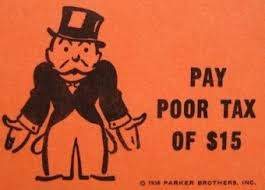Worst Business Ideas in History

Making money is hard. If it were easy, we’d all do it. Some people have great ideas they execute poorly. Others, well, they have bad ideas that were executed poorly and wasted a lot of money in the process. There’s something to learn from each of these aspiring entrepreneurs, even if it’s learning what not to do.
4 Lessons from the Worst Entrepreneurs in History
Some lessons are only learned the hard way. In the case of these businesses, the hard way involved years of wasted money and hard work. Do your best to avoid the path set by these failed businesses.
Know Who You're Selling To
People nowadays worry about the stability of the tech industry. Almost overnight, companies like Facebook, Snapchat, and What’s App were valued at billions of dollars. The reason for this fear is the first tech bubble that popped in late 2000 and helped take the economy into recession shortly after.
Among those early Internet pioneers is Pets.com, widely remembered for its ubiquitous marketing campaign featuring a sock puppet dog. Pets.com sought to ship pet food and toys directly to people’s homes. They built a series of warehouses across the country and spent millions of investor money on marketing, including ads during the Super Bowl. In total, between starting operations in 1998 and closing in 2000, the company spent an astonishing $300 million. Executives at the company failed to conduct any market research before launching. In its first year, Pets.com earned a little more than $600,000 despite spending $11 million on advertising. It didn’t turn out so bad for everyone involved though. CEO Julie Wainwright received more than $500,000 in severance and retention bonuses when the company closed.
Think Before You Make Up Your Mind But Not Too Much
Have you ever created something truly unique? How would you know if you did? Does the world want your creation? Could someone else create it independently?
These are important questions when you suddenly run a research and development department. Film and photography giant Eastman Kodak Company ran into this problem in the late 1970s when their R&D department created the digital camera. Quickly realizing the device’s potential to eat away at their lucrative film business, the company failed to market the product. By the 1990s, digital cameras were changing the photography market and the company announced a gradual transition to the new technology. Their slow pace ultimately left the company without much market share and plummeting revenues. In 2013, the company filed for bankruptcy to reorganize debts and continues operations today, though at a much smaller scale.
Understand the Deal You’re Entering
It’s a little difficult to blame just one person for the ill fated 2000 merger between internet company America Online (AOL) and media conglomerate Time Warner. At the time, both companies saw the merger as a way to deliver content to homes more efficiently. But TIme Warner CEO Jeff Bewkes sums it best when he describes the merger as “the worst mistake ever in corporate history”.
The reason is largely due to the same dot com bubble that destroyed Pets.com. By 2002, the AOL portion of the AOL Time Warner company had decreased in value from $226 billion to only $20 billion. Time Warner executives sought to undo the merger and finally got their wish in 2009 after years of legal wrangling and executive “transitions”.

back to blog

Making money is hard. If it were easy, we’d all do it. Some people have great ideas they execute poorly. Others, well, they have bad ideas that were executed poorly and wasted a lot of money in the process. There’s something to learn from each of these aspiring entrepreneurs, even if it’s learning what not to do.
4 Lessons from the Worst Entrepreneurs in History
Some lessons are only learned the hard way. In the case of these businesses, the hard way involved years of wasted money and hard work. Do your best to avoid the path set by these failed businesses.
Know Who You're Selling To
People nowadays worry about the stability of the tech industry. Almost overnight, companies like Facebook, Snapchat, and What’s App were valued at billions of dollars. The reason for this fear is the first tech bubble that popped in late 2000 and helped take the economy into recession shortly after.
Among those early Internet pioneers is Pets.com, widely remembered for its ubiquitous marketing campaign featuring a sock puppet dog. Pets.com sought to ship pet food and toys directly to people’s homes. They built a series of warehouses across the country and spent millions of investor money on marketing, including ads during the Super Bowl. In total, between starting operations in 1998 and closing in 2000, the company spent an astonishing $300 million. Executives at the company failed to conduct any market research before launching. In its first year, Pets.com earned a little more than $600,000 despite spending $11 million on advertising. It didn’t turn out so bad for everyone involved though. CEO Julie Wainwright received more than $500,000 in severance and retention bonuses when the company closed.
Think Before You Make Up Your Mind But Not Too Much
Have you ever created something truly unique? How would you know if you did? Does the world want your creation? Could someone else create it independently?
These are important questions when you suddenly run a research and development department. Film and photography giant Eastman Kodak Company ran into this problem in the late 1970s when their R&D department created the digital camera. Quickly realizing the device’s potential to eat away at their lucrative film business, the company failed to market the product. By the 1990s, digital cameras were changing the photography market and the company announced a gradual transition to the new technology. Their slow pace ultimately left the company without much market share and plummeting revenues. In 2013, the company filed for bankruptcy to reorganize debts and continues operations today, though at a much smaller scale.
Understand the Deal You’re Entering
It’s a little difficult to blame just one person for the ill fated 2000 merger between internet company America Online (AOL) and media conglomerate Time Warner. At the time, both companies saw the merger as a way to deliver content to homes more efficiently. But TIme Warner CEO Jeff Bewkes sums it best when he describes the merger as “the worst mistake ever in corporate history”.
The reason is largely due to the same dot com bubble that destroyed Pets.com. By 2002, the AOL portion of the AOL Time Warner company had decreased in value from $226 billion to only $20 billion. Time Warner executives sought to undo the merger and finally got their wish in 2009 after years of legal wrangling and executive “transitions”.
@LemonadeDayNational






